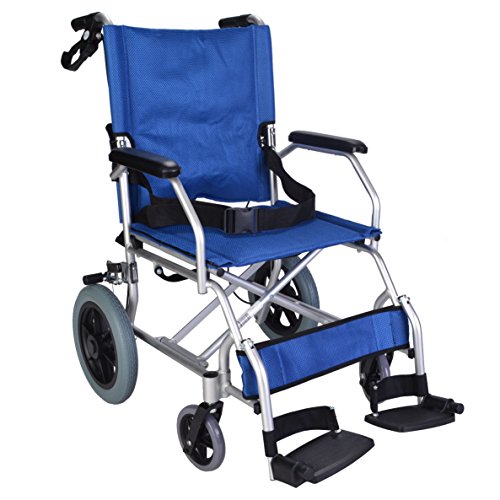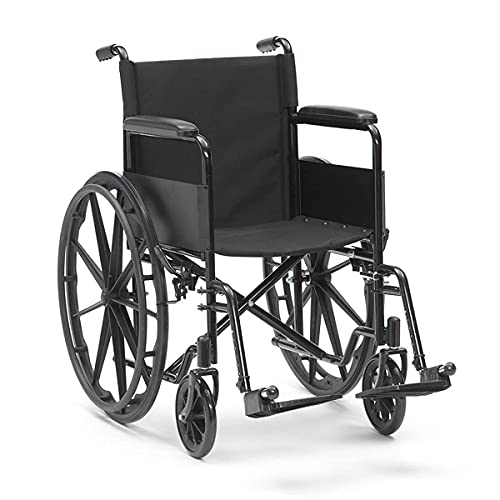 Buying a Folded Wheelchair
Buying a Folded Wheelchair
A wheelchair that folds is ideal for those who travel frequently on a basis or have limited living space. This allows them to take their wheelchair with them when they travel on holiday or in public transport.
Start by shutting off the power and disconnecting it (if appropriate). Find a safe place to fold the chair into and clear the space of obstructions.
Seat and Handlebar
By releasing the lever on the side, the handlebar of the chair can be folded down. The user can lower the footplates, and then swing them out, allowing space for standing transfers. It is also helpful to Get freedom on-the-go with portable wheelchair the chair under the table or desk. Some chairs have armrests that are removable to give them a cleaner appearance and help in transporting the chair in smaller vehicles.
When preparing to fold up a wheelchair, the very first thing a consumer should do is make sure that all of the locks and pins are secured. This will prevent the chair from falling off in transport or causing damage to other items in a car.
The majority of folding wheelchairs have a cross-brace design which collapses the frame by bringing the sides together. There are also other options for collapsible wheelchairs, such as scissor brackets which fold the seat in half and “quick-release axles” that make it easier to fit the chair into tiny spaces.
Before folding the wheelchair, it’s important to check the chair for signs of wear. Also, make sure to adjust the chair if needed. This will not only improve the longevity of the chair, but also prevent any unexpected problems during transportation or storage.
Rigid Wheelchairs are built with a solid frame which can be folded into a boxlike shape to store them and transport. They are typically made of aluminum or titanium and possess an incredibly responsive feel because they don’t flex when a user pushes them. This could reduce the amount of energy one must expend. Some users find it helps them to maintain a greater sense of control.
Before attempting to fold up a rigid wheelchair, the consumer should inspect it for signs of wear and tear or any adjustments that might be needed. This will allow the user to determine whether they require to lift or lower the footplates, and then adjust the legrests. It is essential that the user consult with their physical therapist before making any changes to their wheelchair since it could affect their standing and transfer capabilities.
Uprights
The uprights are the shorter arms near the middle of the wheelchair frame, just below the point where the seat joins the backrest. The hinges or uprights must be clearly identified and are generally a little higher than the armrests. It is crucial to identify and align these components of the wheelchair in order that they remain in the desired, folded position.
Folding or collapsible wheelchairs are wheelchairs that can be folded down to store and transport. They’re usually self-propelled and include an adjustable backrest that folds down to reduce height as well as an X-shaped frame that is vertical to reduce the width. The steerable wheels at the front and the rear load wheels are mounted to brackets that pivot on the upper and lower bars on the sides of the walls. These also support the uprights.
When the chair is in an opened position, the links 61 and 64, and 62 (see the figures. The links 61,62 (see Figures. 2) of each slide are bent and the uprights 9 are not capable of being moved relative to one another even when the handles are raised. When the wheelchair is in a semi-folded position, the uprights can be moved forward from their bearings by moving the slides 61, 52 on the rear and front axles correspondingly.
The wheelchair user is likely to sit incorrectly if their seat isn’t enough. They won’t be able to alleviate pressure from their thighs. This could lead to pressure ulcers. To determine if the seat is deep enough take a measurement of the distance from the pelvis’s back to the beginning of pre-seat bone shelf.
Once the wheelchair is correctly set, it needs to be secured and locked. This will prevent injury or damage from accident when it is being transported and stored. The wheelchair should be inspected repeatedly to ensure that the locking mechanisms are working in the way they should. This step is especially crucial for those who have low sensation in their thighs or feet, as unintended movement of the chair during storage or transportation could cause serious injuries. Once the chair is secure and secured, it can be safely put away in its bag for travel or container.
Seat and Backrest
The backrest and seat of a wheelchair are designed to offer support for stability, comfort, and pressure relief. They can also reduce discomfort and prevent sores and pressure ulcers in people who spend long periods of time sitting. Wheelchair backrests and seat cushions are available in different dimensions, shapes and materials. Foam, gel or air options are available to provide comfort, while foam/air and foam/gel cushions are a more personalised solution that balances between stability and pressure redistribution.
The ideal wheelchair for you is determined by your personal requirements and the setting in which you’ll be using the chair. Your doctor can guide you through this process and recommend the best wheelchair for your needs.
Wheelchairs that fold are collapsible and can be smaller in size for storage or transport as well as travel. The majority of the wheelchairs are constructed with a “cross-brace” or ‘X” frame which allows them to fold in half when the sides are pushed together. Recently, a scissor-brace design has been developed to enable chairs to fold in the front and back instead of the sides. This could help to save space.
They aren’t foldable and may require a big vehicle to move them from one place to another. They are usually considered wheelchairs for young athletes and interested individuals, but can be used by anyone who requires more stability than a folding chair could provide.
Many wheelchairs are now being made of carbon fibre, which is extremely lightweight folding wheelchairs for travelling and durable. However, the use of this material could increase costs. Certain manufacturers have discovered that combining carbon fiber with titanium can help reduce costs.
Wheelchairs that can fold up can be placed in a closet, a storage space or the car’s boot for transporting to appointments with a doctor and social gatherings. Even on vacation! Our engineers have developed a special solution that includes the “fold-forward backrest” that can lower the height of your wheelchair, making it smaller and easier to fit into smaller vehicles and cargo hold on planes.
Wheels
Wheels are the most important component of a wheelchair, especially for users who require mobility because of a medical condition that limits their ability to walk or move on their own. For those with disabilities the quality of the wheels, tyres and casters can make an enormous difference in their daily lives. A set of wheels that is good will aid them in getting where they want to go without feeling the bumps or rough edges of the road.
Wheels for wheelchairs consist of a tyre, rim (and hand rims on manual chairs), spokes or mags, and hub. They can be made from either plastic or metal depending on the type of wheel. A typical wheel is able to support up to 300 pounds and weighs around 7.5 pounds.
Moving and storing the wheelchair can be a challenge for some users, particularly if the chair’s wheels are not foldable. Wheels that fold, such as the Morph Wheel by Vitamins Design, London, are designed to change this. The wheel folds into itself, allowing only 12 liters, a fraction from the 22 liters that it takes up when in its open position.
Created by the same person who invented foldable wheels for bikes This new model is made up of the same central hub as well as six aluminum structures that fold to replace traditional spokes. It also features the rim of aluminum divided into six interlocking segments and covered with a tire that is filled with foam. The wheel is roughly half the size a 24-inch wheel for wheelchairs.
The wheel is an idea in the making, but it has already generated interest among the disability community. It was shortlisted for the Design Museum’s Designs of the Year 2013 alongside the library in South London and a stool that was shaped by magnets.
The designers are working to bring these wheels to the market as soon as is possible, even though they aren’t yet available for all wheelchairs. The company relied on a focus group of wheelchair users to ensure the design as perfect as it can be. A pair of Morph Wheels costs around $950, and is heavier than other wheels for wheelchairs. They can fit into overhead bins of airlines or tight rental car spaces. This makes travel much easier for wheelchair users.